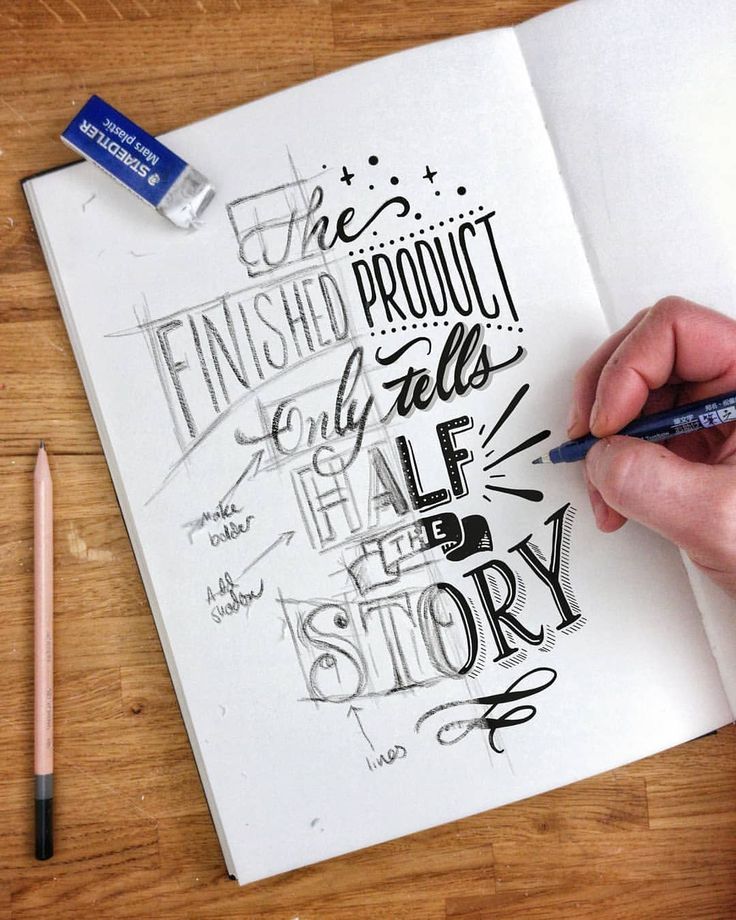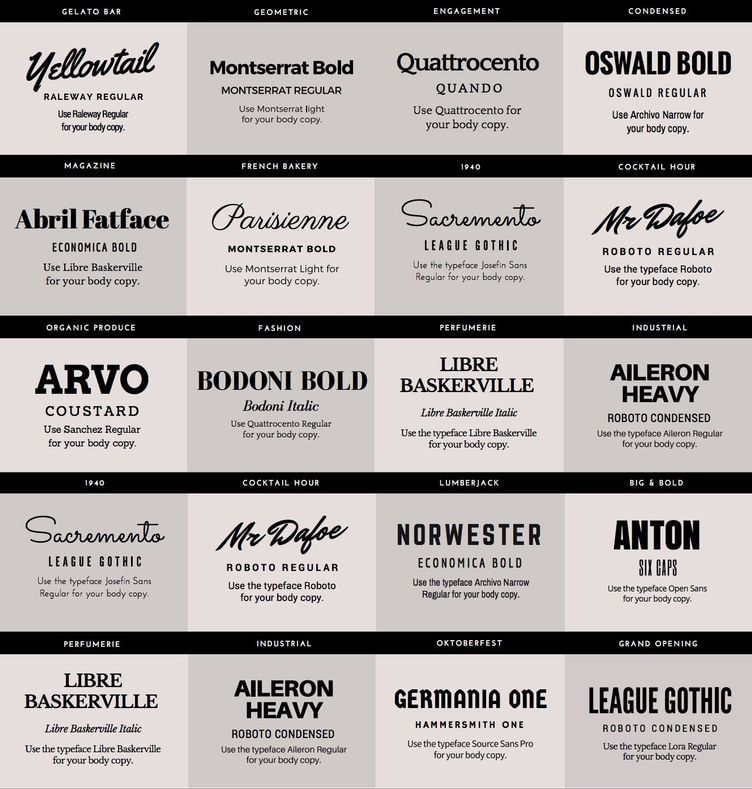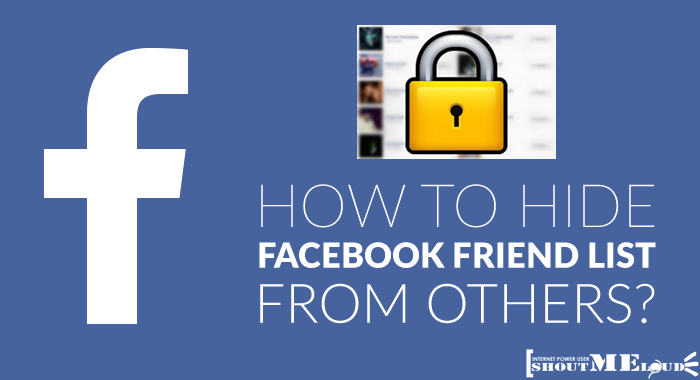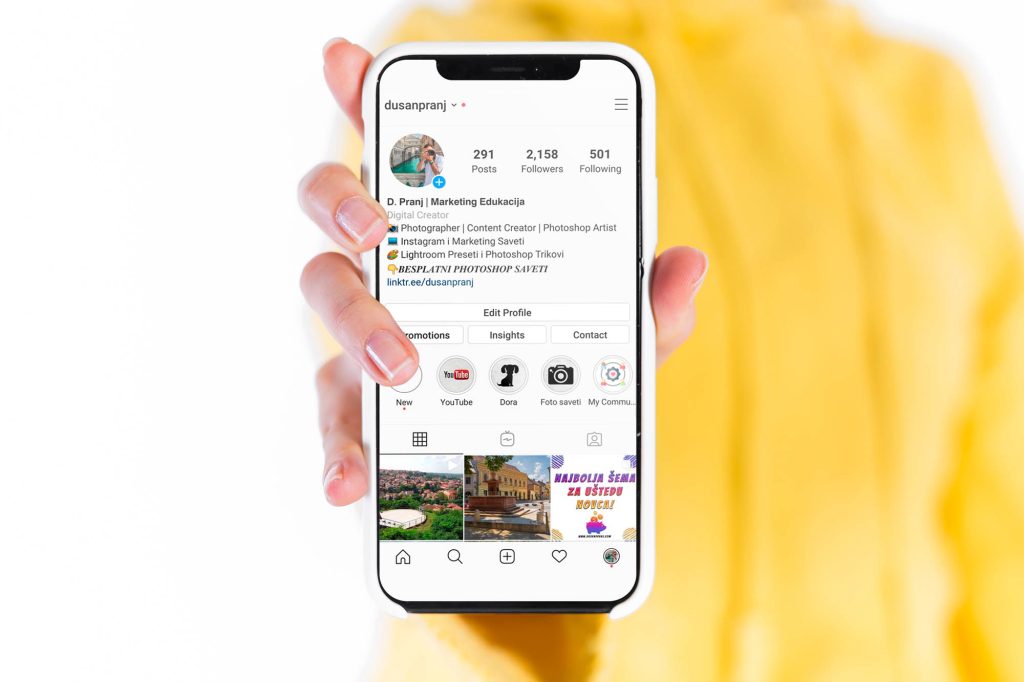How to start a calligraphy instagram
How to Grow Your Instagram as a Calligrapher (6 Strategies to Fuel your Calligraphy Instagram Following) — Vancouver Calligrapher Dina Lu
Written By Dina Lu
If you’ve just started or are in the process of growing your calligraphy account Instagram, and want some smart strategies to grow your Instagram faster, keep reading.
Who is this for?
This guide is for calligraphers who want to grow their Instagram for the purpose of building KNOW, LIKE, TRUST with their ideal target audience. This isn’t for for calligraphers who are just using their accounts to measure their progress with no business goal in mind—don’t worry, I was there at one point when I was a beginner.
You are growing your Instagram for a reason, right?
So I want you to ask yourself: “Why do I want to grow my Instagram?”
Is it to find potential clients for my calligraphy business?
Is it to network with event planners in my city?
Is it to sell my workshops?
Purpose of Instagram for businesses
To build KNOW, LIKE, and TRUST with their ideal audience.
You want your audience to KNOW who you are and what problem you are solving for them. You want your audience to LIKE you. And then you want your audience to TRUST you.
Instagram is a vehicle for bringing your audience somewhere (your products, services)—in marketing, this is called a funnel. So that’s why I’ve always thought of Instagram as a relationship platform.
I want you to be careful. Growing your Instagram following is a way to get somewhere. Don’t get caught up in vanity metrics.
Top 5 hacks for growth
In this blog post, I’ll be sharing about these 5 strategies to grow your following and engagement on Instagram.
Convert your followers from somewhere else (if it makes sense)
Optimize your profile and bio
Show your face
Post engaging photos and stories
Write relevant and engaging captions
Use the right hashtags
Looking for more resources to build your calligraphy business? Welcome to join my Facebook group “Calligraphy Business Bosses” for more!
1.
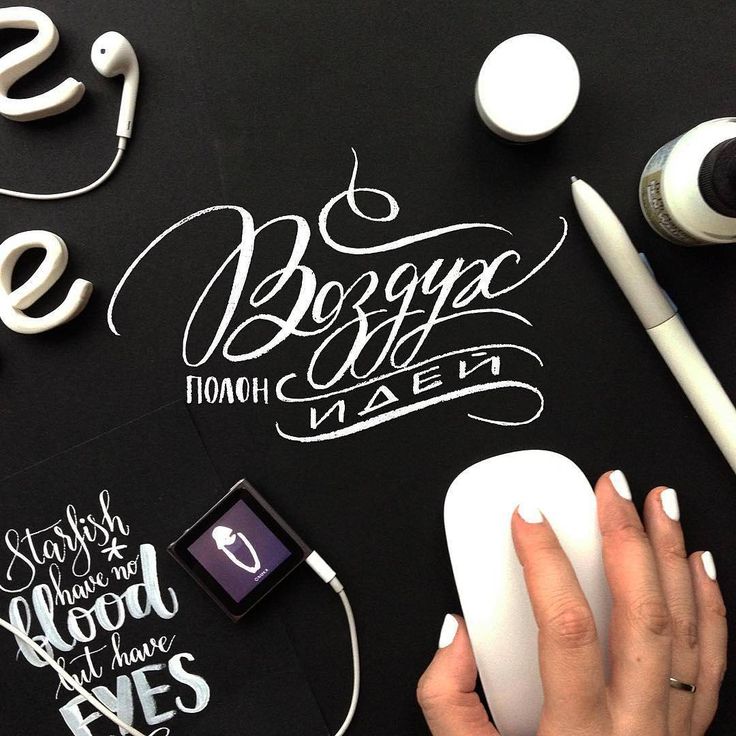 Convert your followers from somewhere else (if it makes sense)
Convert your followers from somewhere else (if it makes sense)A lot of calligraphers have two Instagram accounts:
A personal Instagram account
A calligraphy Instagram account
Did you convert your followers from your personal Instagram account to your new calligraphy account yet?
If you’ve recently started a calligraphy account, you probably have way more followers on your personal Instagram account.
Did you know that tour current friends, family and network are much more inclined to buy from you since they know you already?
Personal example:
In 2018 and 2019, I sold Christmas cards and mainly promoted it on my Instagram through posts and stories. 90% of people who bought my Christmas cards were my friends and people who knew me in real life or through my network. Both years, I made about $500 revenue from Christmas card sales.
DO THIS:
Share on your Facebook page (put it in your bio, make an announcement, add it to the social media section of your page)
Share on your personal IG account, LinkedIn, Twitter, etc
DO THIS:
Share about your calligraphy business on all your social media profiles, including Facebook!
Share about your calligraphy business on all your social media profiles, including Facebook!
2.
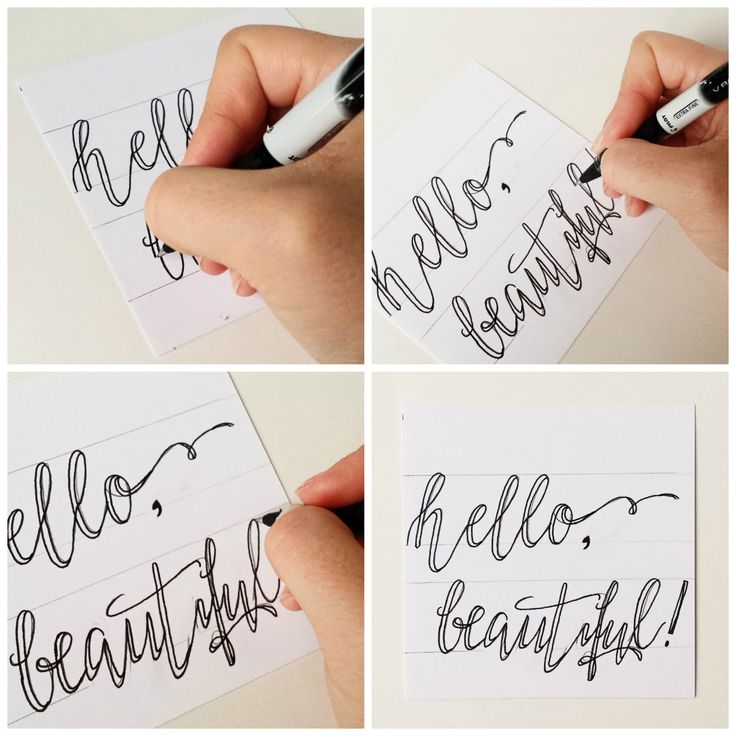 Optimize your profile and bio
Optimize your profile and bioHave you ever heard of SEO, or Search Engine Optimization? I won’t go all fancy on you with digital marketing jargon, but you can do the exact same thing on Instagram.
First of all, what is SEO?
It means optimizing your profile, website, blog—whatever platform you’re using—to be more search friendly.
When you use Google and search for “best gluten free recipes,” for example, the first few posts have the best SEO.
As a calligrapher, you should definitely optimize your website for SEO, but you can also do it with Instagram.
Let’s say someone in your city is searching for a calligrapher to create a custom wedding sign. They might Google it, but they might also use Instagram to search for calligraphers in their city. That’s why I recommend changing the “name” section of your profile to city name + calligrapher then your name.
Not only is the “name” section important, but once someone clicks on your Instagram account, you want them to understand exactly what you offer within three seconds.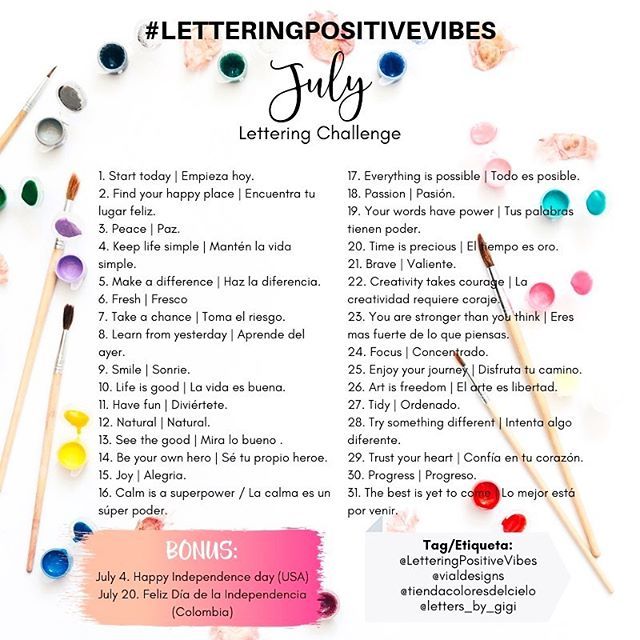 This is where the “bio” comes in. Make it clear what you offer—whether it’s wedding signs, or workshops, or custom calligraphy quotes in frames—and tell them how to contact you or order from you!
This is where the “bio” comes in. Make it clear what you offer—whether it’s wedding signs, or workshops, or custom calligraphy quotes in frames—and tell them how to contact you or order from you!
DO THIS:
Put your city name + Calligrapher so people can search for you
In your bio, put what you offer/help people with
Put an action point (for example, DM me to order, or click my Etsy shop below)
Link to something (Etsy, website, contact page, order form)
Add your city name + Calligrapher, and optimize your Instagram bio.
3. Show your face
When I first started getting into calligraphy, I followed a whole bunch of Instagram accounts. Some accounts only had calligraphy pictures, while others had some photos of the calligrapher behind the calligraphy.
Guess what? I found the accounts with calligraphers who showed their face a hundred times more interesting.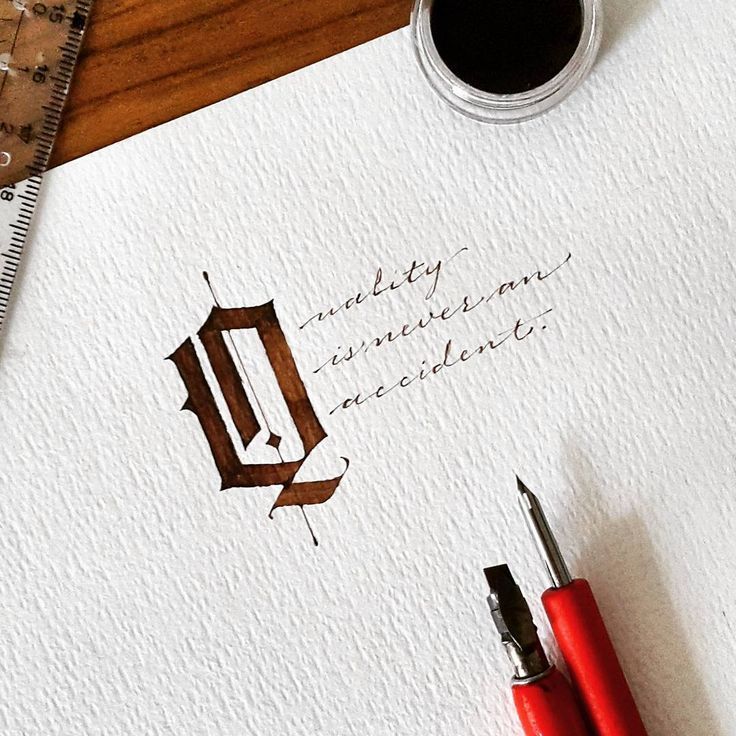 So when I worked on building my own Instagram, I remembered to show my face because I knew people would think the same way as I do.
So when I worked on building my own Instagram, I remembered to show my face because I knew people would think the same way as I do.
People are interested in people, not just products/services.
Why do we all hide ourselves behind our artwork?
How about you—have you seen calligraphy Instagram accounts where people just have product after product? Or calligraphy after calligraphy?
There’s no persona, there’s no story.
It’s boring!
EXAMPLE OF THINGS YOU CAN DO
Pictures of you on your profile picture, in your photos, on your stories
Do behind the scenes on your stories
Show pictures of you working at your desk, or show pictures of your studio
Post engaging photos and stories
After all, Instagram is a VISUAL platform. So of course we need to post engaging photos and stories.
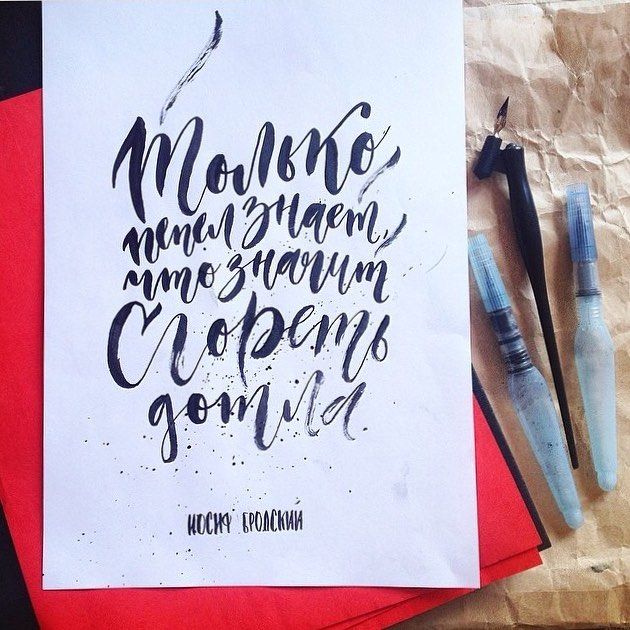
FEED
First, are you being consistent with your feed? Does the overall aesthetic of your feed look consistent and on brand?
I’d highly recommend using an app that lets you preview your feed in advance of you posting. I’ve used the app Later (free and paid versions, for mobile and desktop) and the app Preview (free, only mobile) to plan and organize my feed.
PHOTO EDITING
Photo editing is a huge topic, so I won’t dive too deep into it here. These are some simple things you can do to make your photos look better. If you Google “how to edit photos for Instagram,” you’re going to find thousands of blog posts and videos on that topic, such as:
I personally like to use the Snapseed app (free) on my phone to edit photos.
VIDEOS
Don’t forget about videos.
When you scroll down your feed, videos play automatically. Have you noticed that you’re more likely to stop and watch videos vs look at a photo? Of course, making a video is more time-consuming, but you’ll get better returns.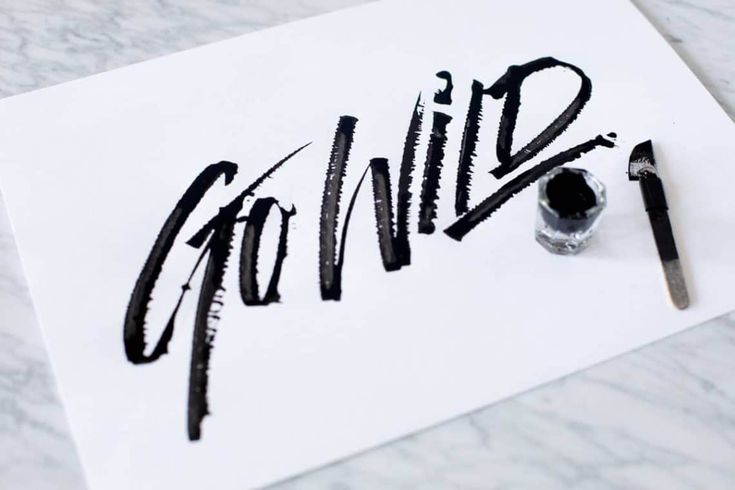
Pro calligraphy tip: If you want to record a video of you doing calligraphy, try using a large cup to hold your phone in place and have the camera facing downwards.
STORIES
If you can, try to be on Instagram stories every single day. Not only do your followers see a lot more behind-the-scenes from you, but it’s also a great way to connect with your followers. Stories don’t require a lot of planning and prep work compared to posting photos and videos on your feed.
For me, I found that I get way more engagement on my stories. I get about 100-200 likes on each photo, but I usually get 200-300 story views.
BUT MAKE IT RELEVANT, SERIOUSLY.If you’re a calligraphy account, I don’t want to see what you’re eating every day. You’re not a food blogger!
Of course, you can have a little fun to show your personality, but about 70% of your stories and feed posts should be relevant to your ideal audience.
5. Write relevant and engaging captions
Are you using Instagram to its fullest? Instagram can be used as a micro-blog in addition to being a visual platform.
Don’t just write one or two sentences when you post a photo. And definitely don’t just put an emoji, my gosh.
If you can, write at least four sentences. Use the space to connect with your audience!
THERE ARE A TON OF THINGS YOU COULD WRITE ABOUT:
What’s the story behind this calligraphy piece?
Who did you create this piece for and why did you create it?
What’s the meaning behind it?
Where did you get your inspiration from?
#FridayIntroductions (yes, that’s a thing—you introduce yourself and post a photo of you)
What are your thoughts behind being a calligrapher or learning calligraphy?
What has helped you progress in your calligraphy journey?
What services/products are you currently offering?
Do you have any upcoming plans to do calligraphy anywhere?
This is not a great caption.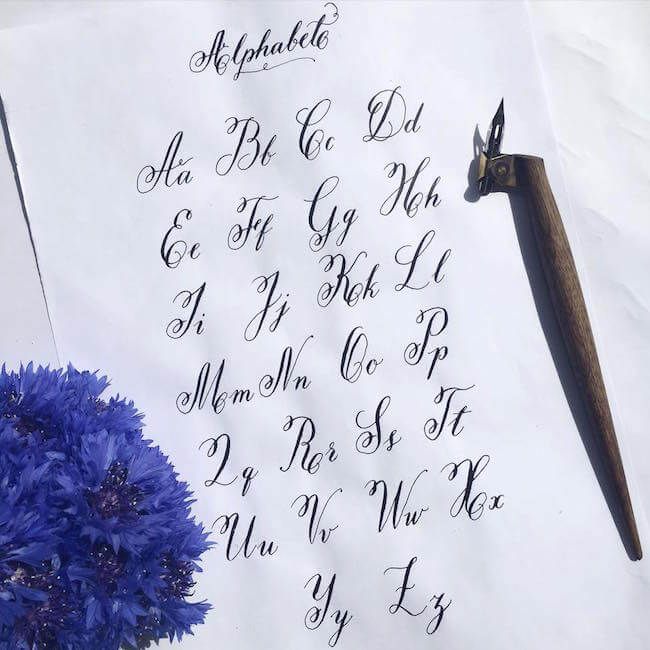
This is WAY better.
This one is great because it shares a real story and allows your audience to connect with you.
6. Use the right hashtags
Are you using the RIGHT hashtags for your audience?
Don’t just blindly use hashtags like #calligraphy #art #love. Do some hashtag research. Again, there are a ton of articles out there about different hashtag strategies.
Use the right hashtag depending on who you want to follow you.
For example, if I want followers from Vancouver specifically so I can promote my Vancouver workshops, I would use Vancouver related hashtags.
What’s best for your business?
In the end, I want you to take a step back and think about whether or not Instagram is the best way to grow your business.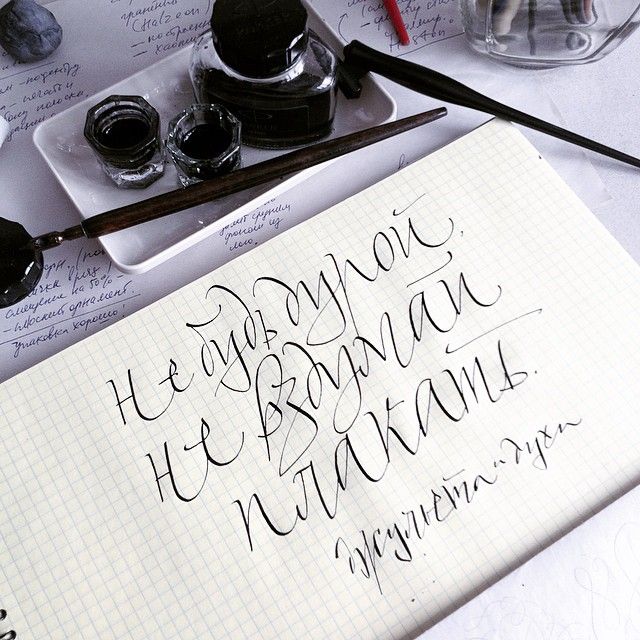
For me last year in 2019, my main income source (90% of it) was from hosting workshops, and only 30% of the people found me on Instagram. Everyone else found me through Google or Eventbrite (the event ticketing platform I use to sell workshop tickets).
Instagram is not necessarily the best way to grow your business. Maybe it’s networking with wedding vendors. Maybe it’s using LinkedIn. Maybe it’s cold-emailing people.
Always: Do what is best for YOUR business.
If you’re looking for more resources to build your calligraphy business and you thought this blog post was useful, I’m welcoming you to join my free Facebook group “Calligraphy Business Bosses”, a community of calligraphers supporting each other in building their calligraphy businesses.
Dina Lu
A Calligrapher's Guide to Instagram with Laura Hooper
Laura Hooper got her start with calligraphy at an early age, and her career has been blossoming ever since.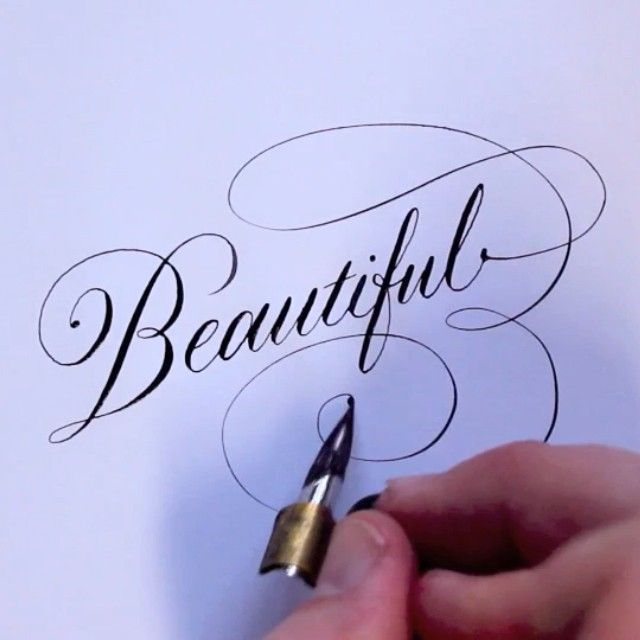 Her passion and talent has helped her business thrive, while also cultivating an impressive Instagram following of over 316K! We're excited to feature Laura on the blog where she shares her expert tips on growing a business, creating content for Instagram, overcoming the algorithm, and so much more! Read on to discover Laura's journey and her advice for aspiring calligraphers.
Her passion and talent has helped her business thrive, while also cultivating an impressive Instagram following of over 316K! We're excited to feature Laura on the blog where she shares her expert tips on growing a business, creating content for Instagram, overcoming the algorithm, and so much more! Read on to discover Laura's journey and her advice for aspiring calligraphers.
Hi Laura! Tell us about yourself. What was the defining moment that made you take that leap of faith and pursue calligraphy full-time?
I started practicing calligraphy as a teenager, but I was doing broad edge calligraphy, which is a bit different than the modern, pointed-pen style that I specialize in today. I had a weekend job personalizing caricatures, so technically I've been getting paid for calligraphy for over 20 years! When I was in my early 20s, still in college, my best friend was getting married, and I forced my "services" onto her. She had over 200 inner + outer envelopes, and it was my first experience with the pointed-pen style I had seen online and wanted to emulate.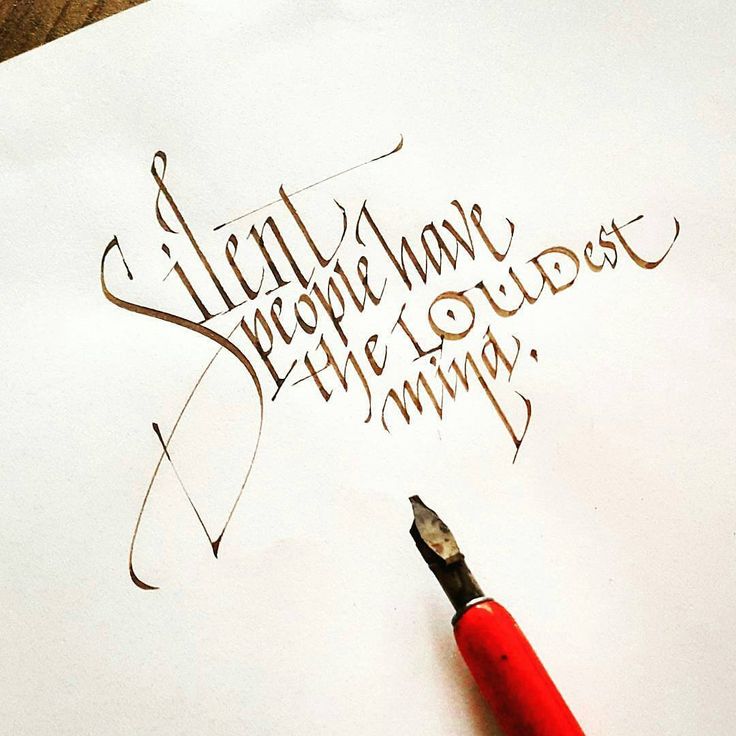 My next few clients were word of mouth, and it took off from there. After doing envelope orders on the side from my 9-5 office job for about two years, I decided that I had a steady enough workflow to take the leap, and I've never looked back even though the industry and my business have both evolved so much over the past 16 years.
My next few clients were word of mouth, and it took off from there. After doing envelope orders on the side from my 9-5 office job for about two years, I decided that I had a steady enough workflow to take the leap, and I've never looked back even though the industry and my business have both evolved so much over the past 16 years.
What's your favorite thing about calligraphy and what do you hope your customers and followers takeaway from your work?
I love the meditative quality that calligraphy has once you get into a groove. If I'm addressing envelopes, without distractions, I can sit for hours and hours just going through a list. You can simply get lost in the art, and everything else fades away. It's important to me that people around the world, at all age levels, be exposed to the art. When I first started, calligraphy was a dying art. Regarding weddings, it was an extra expense that usually our bride's mothers or grandmothers were insisting on for the invitation suite. Today that has completely changed. Calligraphy and lettering are key elements to so many weddings, and we are honored to play a small role in the exposure and celebration that it has received over the past few years, due in large part to social media.
Today that has completely changed. Calligraphy and lettering are key elements to so many weddings, and we are honored to play a small role in the exposure and celebration that it has received over the past few years, due in large part to social media.
What are your top three tips for creating Instagram content for a calligrapher or an artist like yourself?
Well, in general, I think it is really important to consider the purpose of your IG feed and what you are trying to achieve. Are you using it as a portfolio for your work? Are you using it to keep yourself on task with practice? Are you trying to promote yourself and your work/product? Do you strive to be an inspirational source for other calligraphers? It can't be all about likes and followers. Sometimes we post something, and it has very few "likes" but the purpose was to sell our workshop seats, and we got five signups within a day or two of posting. That would be a successful post even though it doesn't get the same likes as when I share flowers from my @foxhillgarden.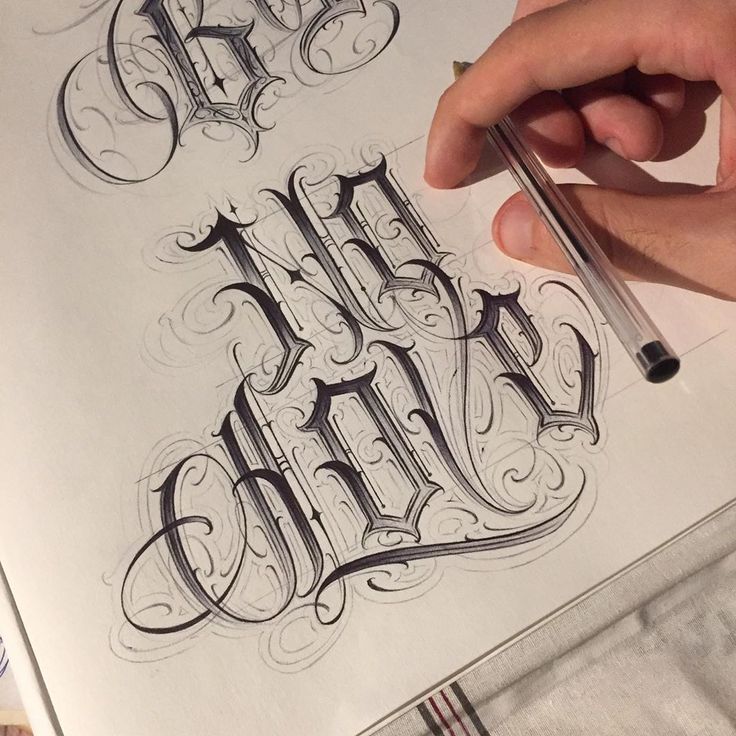
& what you're trying to achieve."
Tweet this.
Another tip is, of course, to look at your feed as a whole to create something aesthetically pleasing. This is where PLANOLY comes in for us. We would literally never post without seeing how a photo or video fits in with the feed overall. You could have an account with a huge following share your IG handle and direct people to your feed, but if their first impression is a cluttered mess, it's unlikely that they will stick around to see what you have to share. For artists selling their products/services, a helpful tip is to share what you want to continue selling. We hear from a lot of people just getting started in their business who are unhappy with the style or type of orders they are receiving. But when looking at their IG feed, it's exactly the work they are sharing. We don't share everything we work on, but instead the products, services and styles for which we want clients to hire us.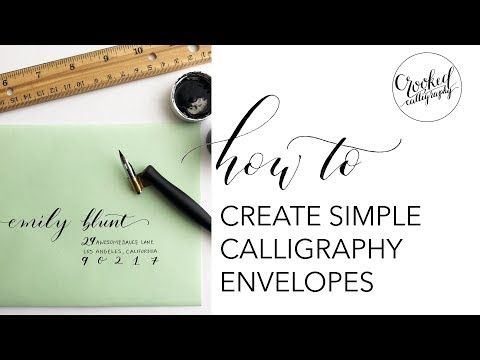 Your Instagram feed doesn't need to be a running stream of everything you've ever created whether you liked it or not. You are in control of what you share and can somewhat steer the direction of your business accordingly.
Your Instagram feed doesn't need to be a running stream of everything you've ever created whether you liked it or not. You are in control of what you share and can somewhat steer the direction of your business accordingly.
Tweet this.
You have a huge Instagram following, but everyone has been complaining about Instagram's algorithm and how it's affected their engagement...with that said: Has Social Media and Instagram in particular been vital to your business's growth and how?
We were lucky to get onto Instagram fairly early and already had name recognition in the business, so we grew our following fairly quickly. While we also have great SEO on our website and an active email list, if there's a quick sell of a product we want to clear out, we can generally share on Instagram and get traffic to our shop immediately. Instagram, in conjunction with our email list, has been paramount in the promotion of our workshops and online education for calligraphy as well.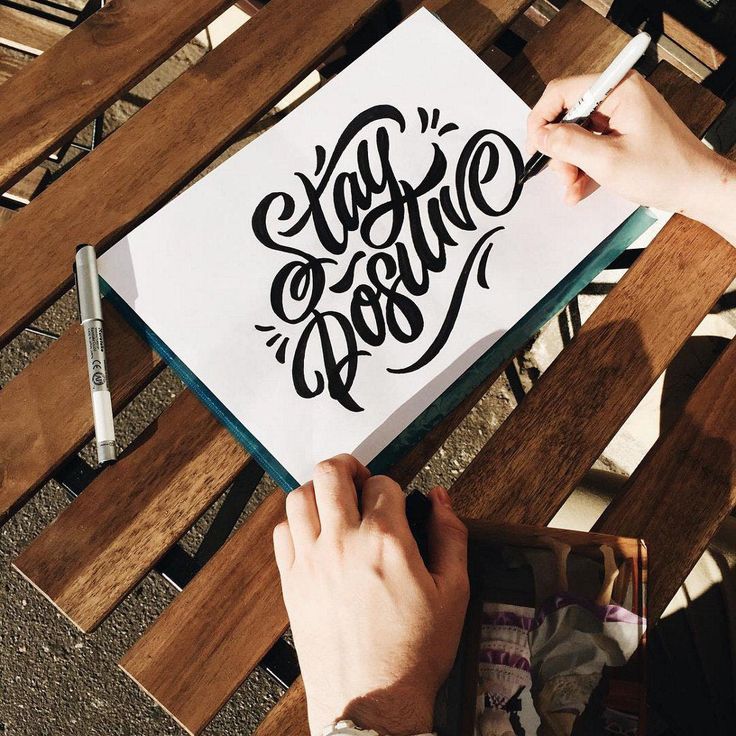
How have you engaged with your followers & grew your audience over the years even with the algorithm? How have you overcome the algorithm?
I'm not going to lie. The algorithm has certainly stalled our growth. We were fortunate to get in front of a really large audience for years and year before the algorithm was even a blip on anyone's radar. I also think accounts selling a service or product are at a distinct disadvantage compared to an account that is predominantly inspirational. I would say that we have more accepted the algorithm than that we've overcome it. It was really hard to see likes and comments decrease significantly, but people are still responding to our posts by signing up for classes, booking our services, purchasing the products... so if we can still get the bottom line outcomes we need, while also inspiring other calligraphers in their journeys, I'd say it's still a success even up against the algorithm!
In your experience, what is the best content you've created for your Instagram and how have you reproduced that success?
Well, it's funny, the best content regarding likes is always my flower photos! I feel like they are universally loved, whereas otherwise our audience is somewhat divided into a few groupings: wedding clients (who phase out once the wedding is over), aspiring & fellow calligraphers, and then a general audience that enjoys art and beautiful calligraphy/imagery in general.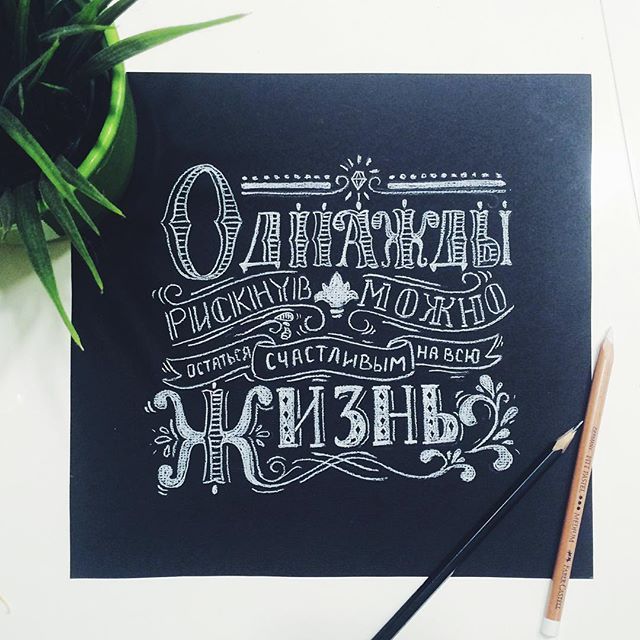 If we notice that a certain product gets more traction in a lifestyle photo versus a flatlay photo, we will try to focus on that for that specific piece, but in general, I pretty much share what I find beautiful.
If we notice that a certain product gets more traction in a lifestyle photo versus a flatlay photo, we will try to focus on that for that specific piece, but in general, I pretty much share what I find beautiful.
My business wouldn't be at the level it's at today if I hadn't continued to expand and truly create a brand.
Tweet this.
What have been your toughest challenges as a calligrapher, and how did you overcome them? What is your advice for aspiring calligraphers or artists?
I'd say the toughest challenge has been continuing to evolve with the business over so many years. The industry looks nothing like it did when I first started, so it's been vital to the success of my business to continue growing, changing our offered services, trying new things, etc. It would have been easy to just stick to only addressing envelopes for 16 years, but my business would never be at the level it's at today if I hadn't continued to expand and truly create a brand.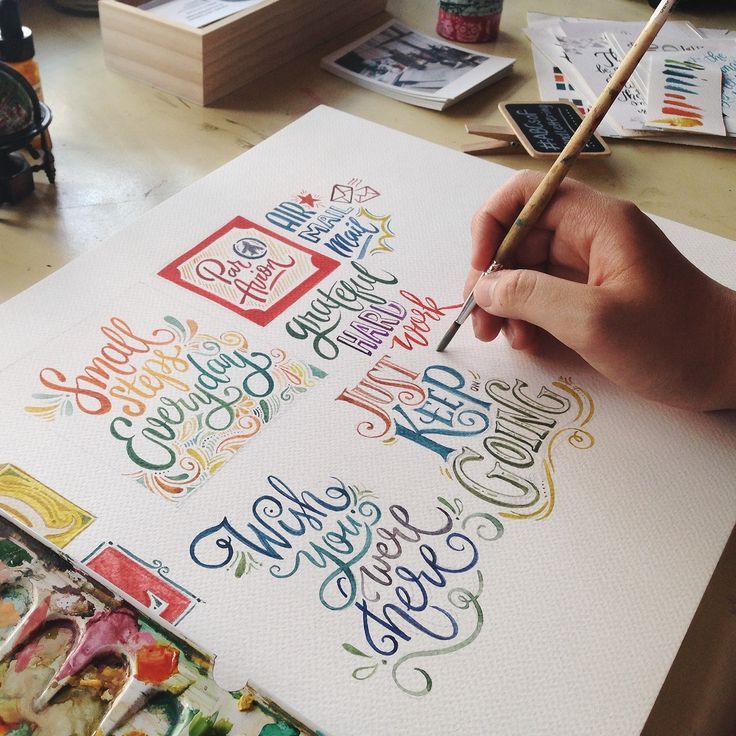 My advice for aspiring calligraphers is just to keep going. Calligraphy is not an easy skill to master and owning your own business, in any field, is incredibly time-consuming, exhausting, and a crazy roller coaster all around. You must have the determination and the will to put in the hard work. Though I have yet to meet a small business owner who doesn't think it's worth it in the end.
My advice for aspiring calligraphers is just to keep going. Calligraphy is not an easy skill to master and owning your own business, in any field, is incredibly time-consuming, exhausting, and a crazy roller coaster all around. You must have the determination and the will to put in the hard work. Though I have yet to meet a small business owner who doesn't think it's worth it in the end.
How do you stay inspired and continuously creative?
My trick here is allowing myself to rest. When I'm constantly working, I'm just thinking about the project at hand and don't have time to think "big picture" or what could come next. So instead I intentionally allow time for my other creative hobbies, like gardening and sketching, and then also set aside for actual strategic planning to think about how I could put my creative skills to good use.
I want to practice calligraphy. Where to begin?
Ladies, WIne & Design
I want to do calligraphy.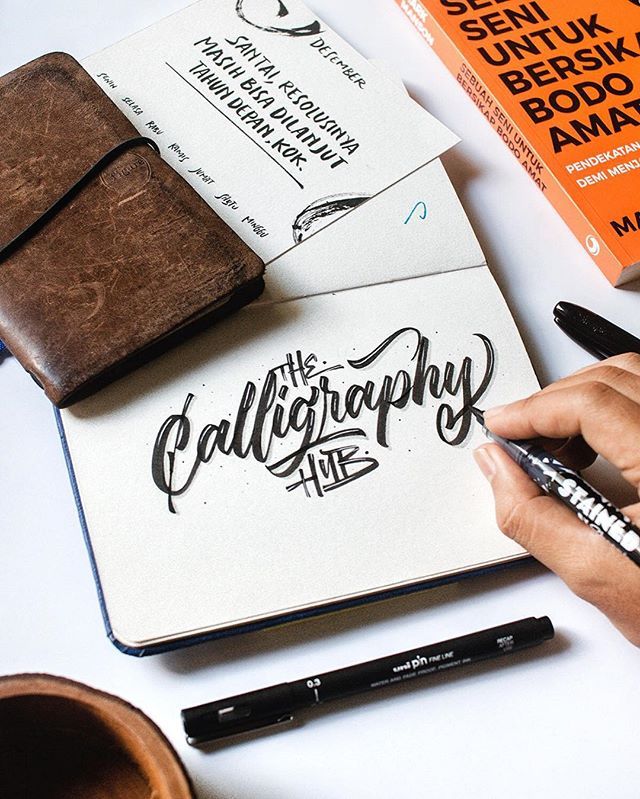 Where to begin?
Where to begin?
As part of the Ladies, Wine & Design, Moscow project, we talked to Elena Anfimova, a calligrapher with 15 years of experience and a teacher at La Graphos studio. You can listen to the first episode of our podcast by following the link at the end of the material, and now let's talk about the steps you need to go through to become a master of pen and ink.
1. What do you want from calligraphy ?
Let's say you have free time and you like calligraphy. Great, what do you want: just to write beautifully or, after seeing enough cool works on Instagram, do you decide that calligraphy is “an easy, easy form of making a lot of money”? If your task is to become a professional calligrapher, then I will disappoint you right away, eight lessons are not enough. It takes a year or two of daily practice: sitting, writing, and putting up your hand. Teaching calligraphy will have to go a long way. It takes a few more years of study to learn fonts, techniques, tools, and understand: can you write something in your own style or will you copy your teacher?
It takes a few more years of study to learn fonts, techniques, tools, and understand: can you write something in your own style or will you copy your teacher?
2. Where to start: theory or practice?
You make a strong-willed decision to practice calligraphy professionally, and new questions immediately arise: run for specialized literature or download copybooks and immediately take up a pen? The best option is the atmosphere of live writing with a good experienced teacher. In the process of such training, the teacher will teach you something that is difficult to convey during online courses: how to sit and hold the instrument correctly so that your back and arms do not hurt, how to move and how to breathe while writing. The calligraphy course contains both practice and theory: together they will help chart the path for further development. After such an experience, you will receive basic knowledge and will be able to continue practicing at home in copybooks and online courses.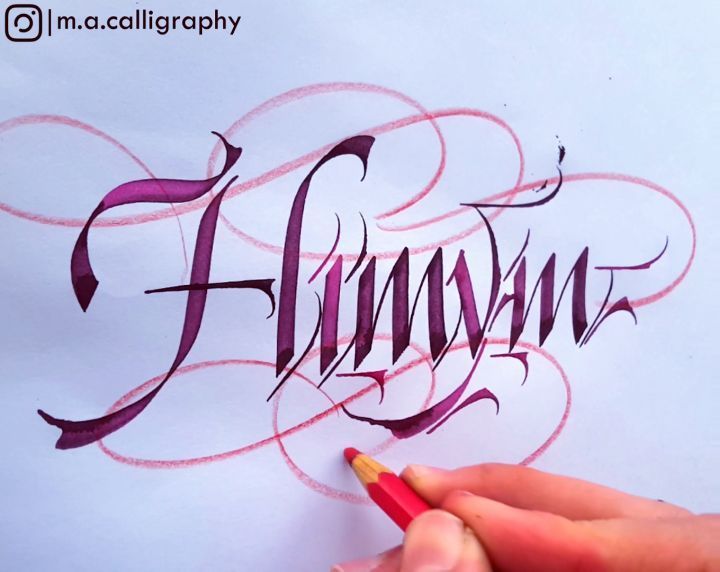
3. What style should I start with?
The basis of any knowledge is a solid foundation. The foundation of calligraphy is Cooperplate (sharp pen) or Italic (flat pen). Having mastered the classics, you can, for example, go from Cooperplate to Spencerian, and from it to Modern, which is very popular at weddings. From Italic you will switch to Gothic or Liga. But in order to learn how to write beautifully with any tools - rolling, brush, brush pen - you first need to learn how to write correctly, and you cannot do without knowledge of the classics. Create a strong foundation, and then you can hang any facade on it and decorate it as you like.
Gottfried Pott
4. How to take the classics to the next level?
Open Instagram and absorb. If you liked the work of some master, try to copy it! First, by studying the work of other calligraphers, you will be able to understand what you would like to see in your own. Secondly, by copying someone else's work, you change the writing technique. Think about how or what the author did this work, what he was guided by. If you do not understand how or what it is written - do not be shy, write to the author, ask. Either they answer you or they don't. In the first case, you will replenish your knowledge. You can go even further and ask to evaluate your calligraphy. And it’s better to get a paid Patreon subscription for $10 and send your work to the masters for analysis. Don't forget: the learning process is a non-stop thing.
Secondly, by copying someone else's work, you change the writing technique. Think about how or what the author did this work, what he was guided by. If you do not understand how or what it is written - do not be shy, write to the author, ask. Either they answer you or they don't. In the first case, you will replenish your knowledge. You can go even further and ask to evaluate your calligraphy. And it’s better to get a paid Patreon subscription for $10 and send your work to the masters for analysis. Don't forget: the learning process is a non-stop thing.
Artwork by Lena Anfimova
5. Where and how to make money with calligraphy?
Of course, before entering the market, you need to have a portfolio. And to make your portfolio visible, remember: calligraphy does not end on paper, it can be transferred to any medium, making a thing purely individual. Airbrushing on cars, tattoos, clothes, jewelry, belt buckles, bedding, dishes, monograms that can be embossed on anything: on a suitcase, dressing gown or bag.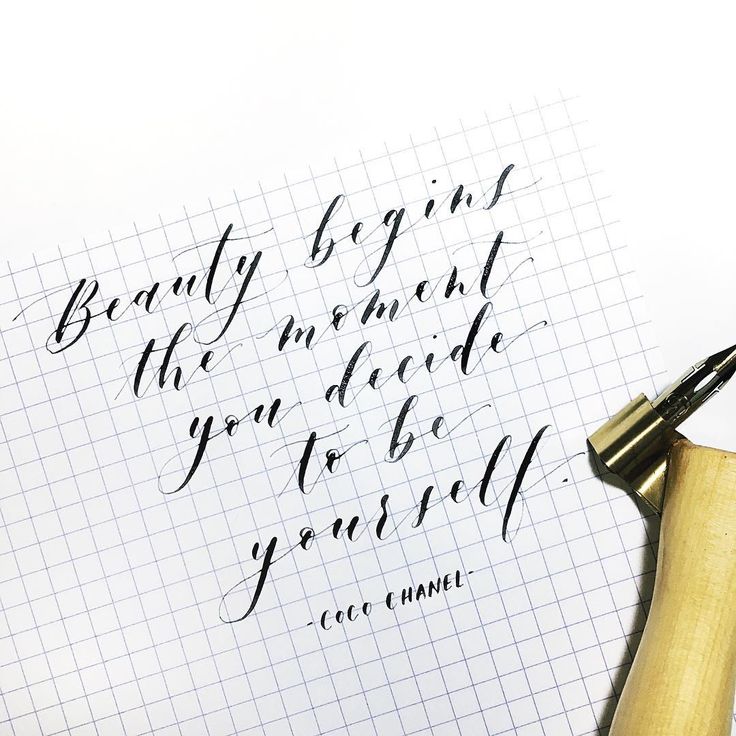 The famous master Brodie Neuschwander made the braid of the entire church building with a metal lattice made up of letters! And in Arab countries, where images of living beings are prohibited, the letter lives perfectly on any surface: on fabric, furniture, lamps or in the interior. Calligraphy is not limited to invitation signatures, logos and wedding cards, it is limited only by the author's imagination.
The famous master Brodie Neuschwander made the braid of the entire church building with a metal lattice made up of letters! And in Arab countries, where images of living beings are prohibited, the letter lives perfectly on any surface: on fabric, furniture, lamps or in the interior. Calligraphy is not limited to invitation signatures, logos and wedding cards, it is limited only by the author's imagination.
Brody neuenschwander
You can listen to podcast with Lyudmila at the venues:
Yandex.Musiki
Apple Podcast
SPOTISE 9000 ANCHOR
View record with Lena about our YUUUT read my posts on Medium
How to get a million followers on Instagram
Typographer Seb Lester shares how his Instagram profile went viral with weird but interesting videos.
Seb Lester is a well-known designer in his own circle who has designed logos and typographic illustrations for many of the world's largest companies, from Nike and Intel to NASA.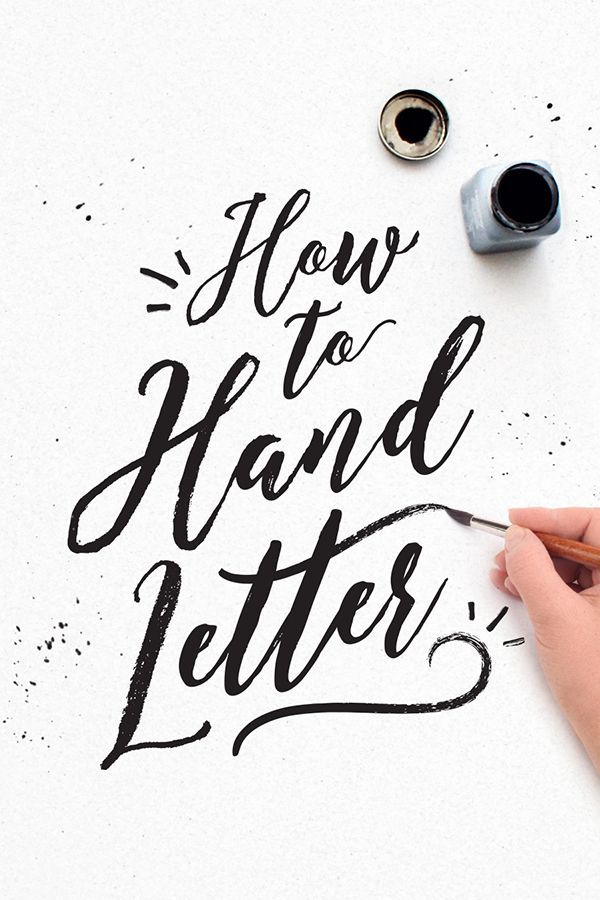 However, despite the fact that his work was always in front of millions of people, he remained a relatively unknown specialist. That was until Seb started posting speed-up videos of his creation process on Instagram and suddenly became famous. The number of his subscribers skyrocketed to 1.1 million, after which he received an offer from Apple for a one-year work contract. It should be noted that Seb Lester was the first artist to receive such an offer from Apple.
However, despite the fact that his work was always in front of millions of people, he remained a relatively unknown specialist. That was until Seb started posting speed-up videos of his creation process on Instagram and suddenly became famous. The number of his subscribers skyrocketed to 1.1 million, after which he received an offer from Apple for a one-year work contract. It should be noted that Seb Lester was the first artist to receive such an offer from Apple.
Lester recently wowed audiences with his work at the Reasons.to festival. This festival is held annually in Brighton, UK and awards achievements in the fields of design and programming. We interviewed Lester after his acceptance speech and asked him what it takes to get your social media profile going.
1. Instagram isn't just for digital art
Although Lester now posts digital designs frequently, calligraphy has made his profile famous. "It's amazing how easy it is to get handwritten work online," he says.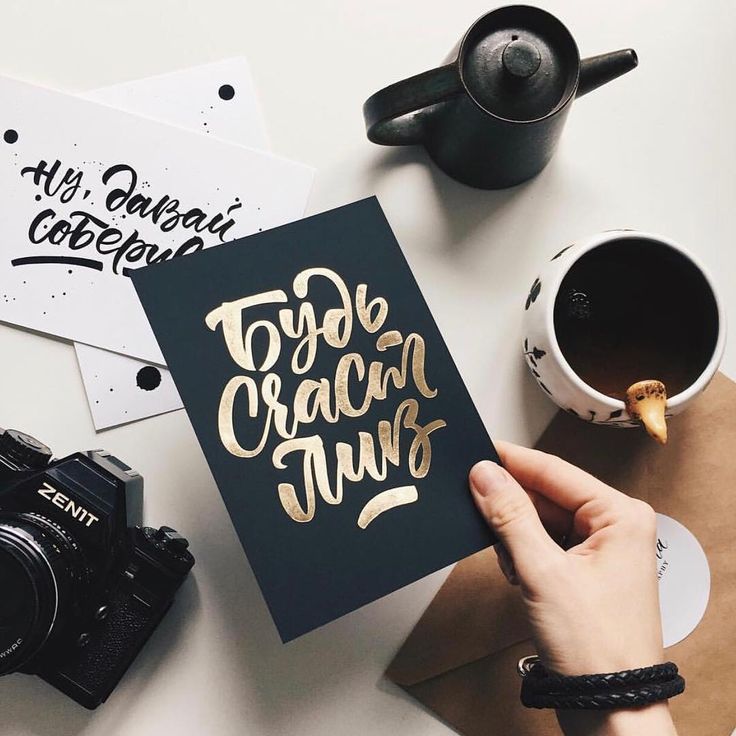 "You have an ordinary, in its own way even somewhat ancient hand drawing - and you can easily publish it on the Internet."
"You have an ordinary, in its own way even somewhat ancient hand drawing - and you can easily publish it on the Internet."
Lester wonders if his videos are popular because they fall into the category of videos about the process of creating something unusual and inaccessible. "There's something rewarding about watching something build from start to finish," he explains. "There was just a blank sheet of paper, and then a drawing came along."
2. Don't limit yourself to fellow artists and designers
The coolest and most basic difference between sites like Instagram and design-focused platforms like Behance is that you can connect with an audience of people who don't have nothing to do with creativity. “I love the fact that a lot of my followers are people who work as hairdressers or bakers or just have nothing to do with the visual arts. I think it's very cool, says Lester. “People who have never even thought about calligraphy, and then suddenly learn something about it, and this art becomes extremely attractive to them.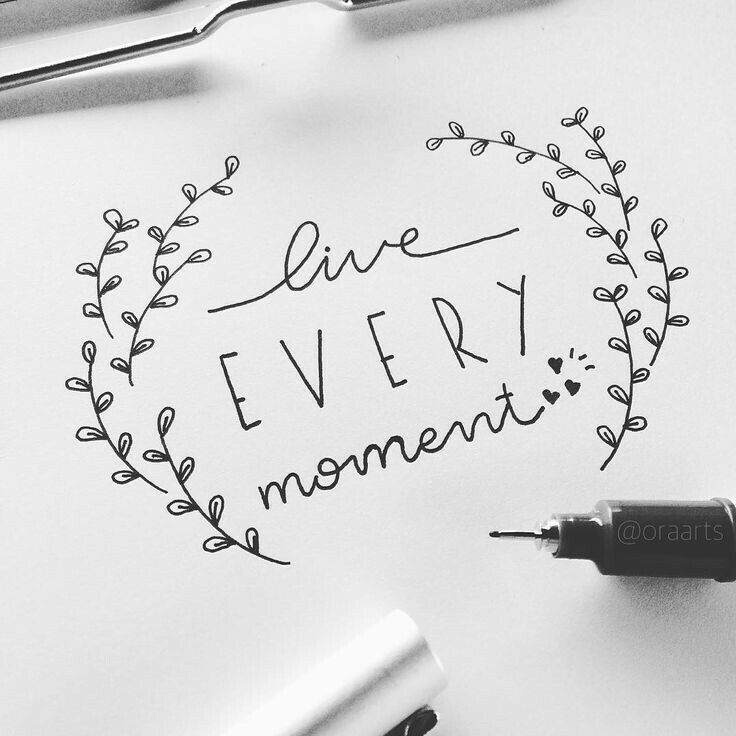 ”
”
3. Find your niche
Lester's latest work is his Doodles logos: short videos in which he recreates famous logos on the iPad Pro. Lester emphasizes that logos are interesting because they cause an instant response in the mind, thereby attracting people's attention.
He understands that logos, thanks to their ubiquitous use, are more versatile than his other love: heraldry. "I'd love to have a weird conversation about 7th century Pictish stone patterns. From the point of view of ordinary people, these patterns can be both strange and beautiful, but such a painting technique is definitely out of this world. While the logo, let's say Netflix instantly resonates in the mind," he smiles.
4. Create with pleasure
Lester's commercials are simple: he uses a tripod and a digital SLR to shoot. The artist admits that now he could even use the phone for filming. In his opinion, the refusal to use sophisticated equipment gives a special charm to his videos.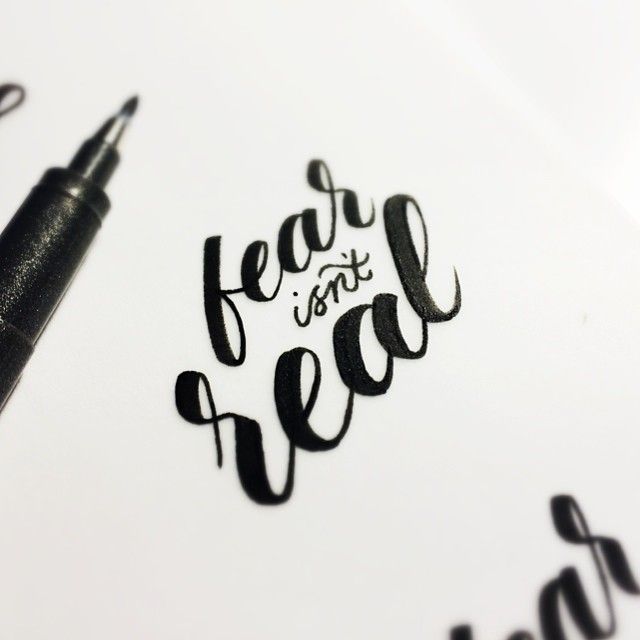 "It's a little trick. The simple equipment is part of the essence of these little short videos; these videos are nothing but little tricks," he says. "These are just entertainment videos. It's not art or anything like that. It's all just pop art for fun. You can make an amazing illustration on a notepad sheet with a regular pen and it can become hugely popular, as it happened to me. The main thing - to be open".
"It's a little trick. The simple equipment is part of the essence of these little short videos; these videos are nothing but little tricks," he says. "These are just entertainment videos. It's not art or anything like that. It's all just pop art for fun. You can make an amazing illustration on a notepad sheet with a regular pen and it can become hugely popular, as it happened to me. The main thing - to be open".
5. Use the new tools
Although Lester can create masterpieces with conventional pens, he also enjoys using the latest digital tools. "I'm not one to ignore technology. The best artists and calligraphers in history have always been on the lookout for the tools that work best for them," he notes. "I'm absolutely sure that Dürer would have been fascinated by digital technologies. He would have been just delighted with them. And Da Vinci. I'm sure they would have been big fans of it all."
According to him, the most important advantage of the new digital tools is their ability to partially automate the drawing process.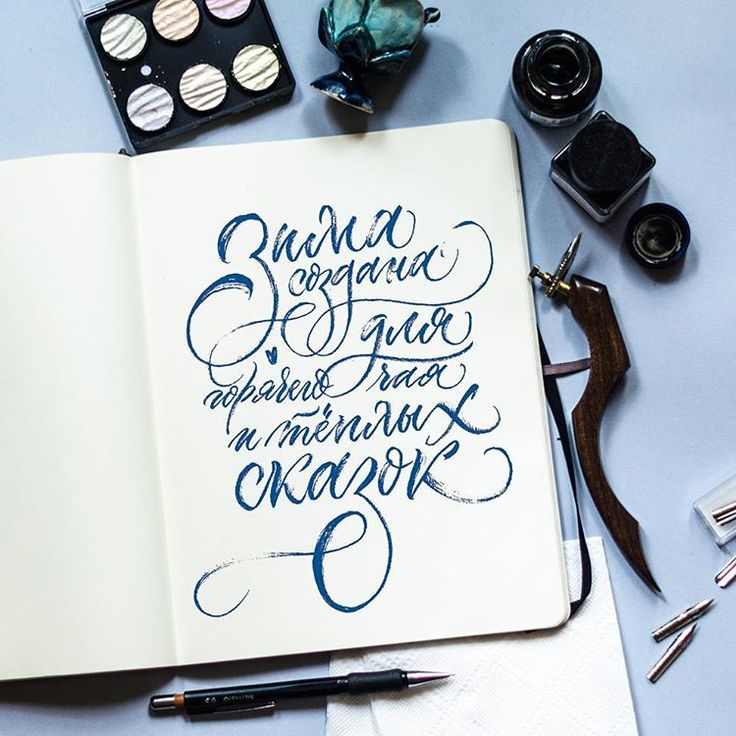 With automation, it becomes possible to use the reflection of parts of the picture, and it is also easier to work with rotational and reflectional symmetry. These features make it much easier to draw incredibly complex shapes, exemplified by Leicester's heraldic work.
With automation, it becomes possible to use the reflection of parts of the picture, and it is also easier to work with rotational and reflectional symmetry. These features make it much easier to draw incredibly complex shapes, exemplified by Leicester's heraldic work.
6. Don't underestimate social media...
When Lester joined Instagram, he didn't realize what a breakthrough it would bring to his career. He now recognizes the importance of social media for artists and designers. “Today, every artist needs to have social media profiles, whether they like it or not,” he comments. "I don't think people are spending as much time on third-party sites as they spend on their social media pages today."
Together with the use of social. networks appear and much more responsibility. “You have to watch what you say. It is always necessary to remember about publicity,” he adds.
7. ... But don't overdo it
It's important to remember that you're not just talking to your closest friends.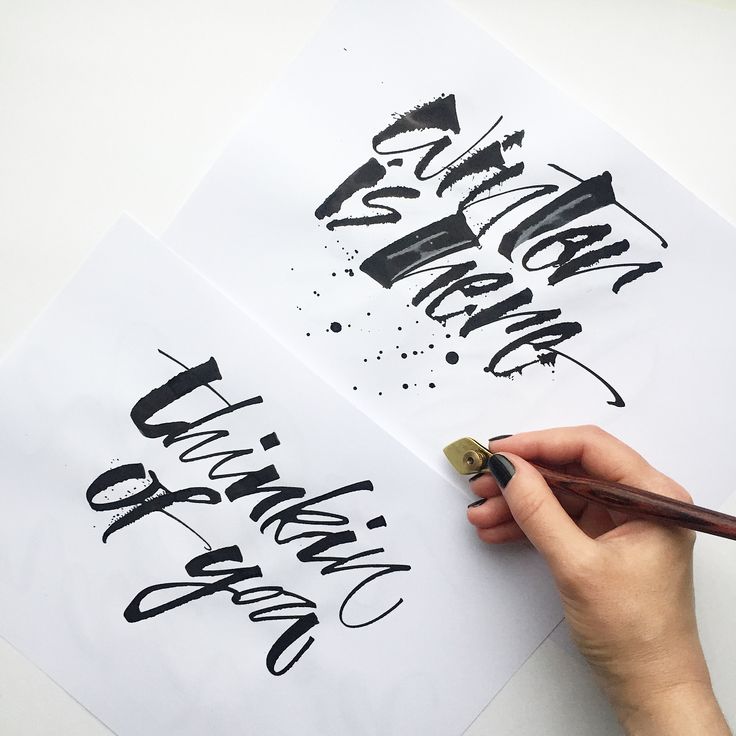 You need to understand what consequences your posts can carry. Lester prefers to approach the use of social media like a computer game.
You need to understand what consequences your posts can carry. Lester prefers to approach the use of social media like a computer game.
"If every time I replied to a comment I thought that there were real people behind these avatars who were interested in my work, it would become much more difficult for me to manage social networks," he explains. “Actually, it still surprises me when people come up to me and say they follow my Instagram, and it’s strange for me to think that this is actually a real person from the material world.”
In order not to act like a paraplegic, he takes advice from his well-known blogger friend with a YouTube channel, Casey Neistat, whose show he was on in 2015. “Casey says that you need to keep working, not paying attention to it all, you just need to create. And he's damn right. Pay attention to social networks, but do not overdo it.